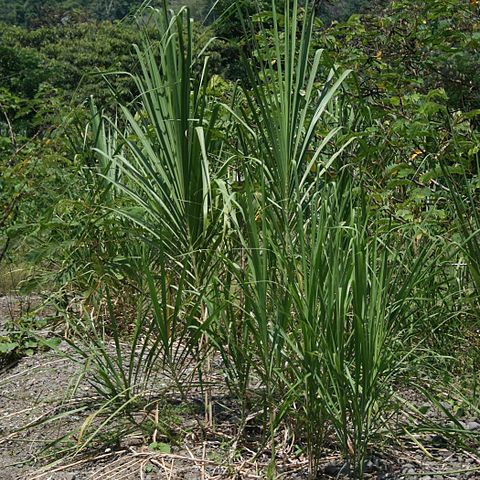A grass. It can grow 3-10 m tall. It has rhizomes or underground stems. The leaves are simple and dark green. They are narrow.
Plants dioecious, the female panicle plumose, the male glabrous; spikelets 3·5–5·5 mm. long.
Leaf-blades up to 7 cm. wide, spinulose on the margins
A huge plant up to 8 m. high

